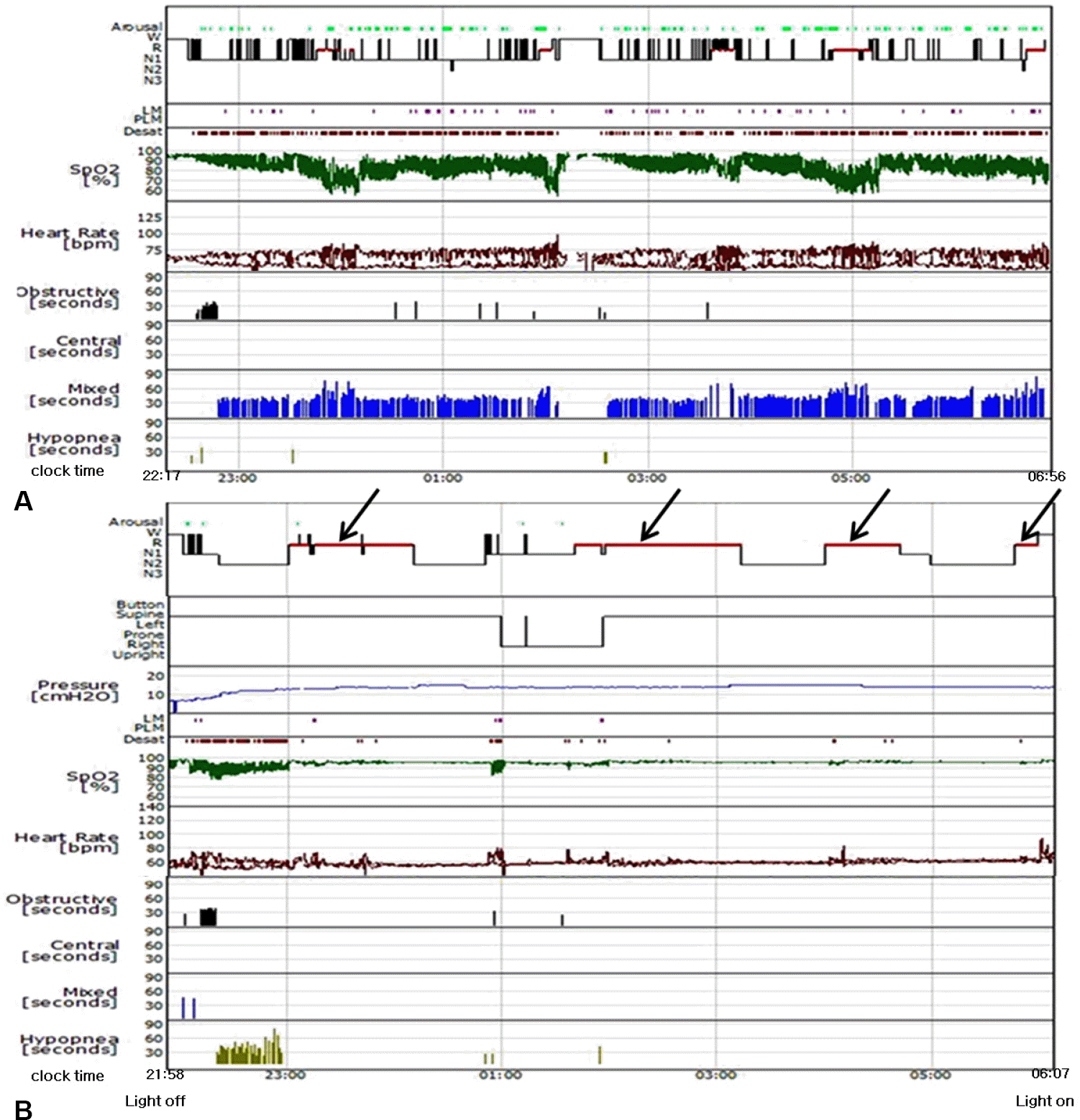REFERENCES
3.Brillante R., Cossa G., Liu PY., Laks L. Rapid eye movement and slow-wave sleep rebound after one night of continuous positive airway pressure for obstructive sleep apnoea. Respirol-ogy. 2012. 17:547–553.

4.McArdle N., Douglas NJ. Effect of continuous positive airway pressure on sleep architecture in the sleep apnea-hypopnea syndrome: a randomized controlled trial. Am J Respir Crit Care Med. 2001. 164:1459–1463.
5.Bradley TD., Floras JS. Sleep apnea and heart failure: Part I: obstructive sleep apnea. Circulation. 2003. 107:1671–1678.
Figure 1.
Hypnogram of diagnostic polysomnography (A) and continuous positive airway pressure (CPAP) titration (B). Note the profound oxygen desaturation with sleep-disordered breathing regardless of sleep stage and sleep position. Sleep architecture was highly fragmented. REM proportion was relatively preserved, but slow wave sleep was absent. Optimal CPAP terminated sleep-disordered breathing and reduced arousals. Note the remarkable REM rebound (as designated by R in the y axis) with the arrows pointing to these areas of interest. REM; rapid eye movement.





 PDF
PDF ePub
ePub Citation
Citation Print
Print


 XML Download
XML Download